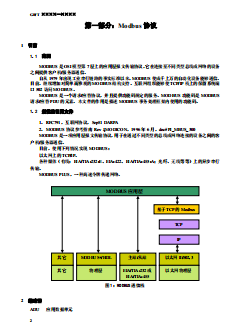《Redis 4.x Cookbook》是一本非常实用的书籍,对于对Redis感兴趣的开发与运维人员来说是一本不可多得的参考书。本书以Cookbook的形式,提供了80多个实战案例,从设计、开发到运维等方面全面介绍了Redis的知识。通过阅读本书,读者可以由浅入深地学习到有关Redis的几乎所有内容。无论是初学者还是有一定经验的开发与运维人员,都可以从中获得丰富的知识和实践经验。这是一本难得的好书,强烈推荐给所有对Redis感兴趣的人阅读和参考。

Redis 4.x Cookbook英文版电子书
读者评价
Redis 是一个十分热门的内存数据库,号称后端的“瑞士军刀”,它拥有诸多优良特性,已经被越来越多的公司采用,值得每一位开发者学习。通过《Redis 4.x Cookbook》讲述的Redis在设计、开发和运维等方面的80 多个实战案例,读者不仅可以由浅入深地学到有关Redis 的几乎所有知识,还可以将案例中所讲解的内容直接用于包括设计、开发和运维等在内的各类生产实践。《Redis 4.x Cookbook》中的每一个案例、每一个案例中所涉及的各种知识、命令和工具等,均来自作者一线企业级应用的总结;本书中总结的各类参数配置和故障诊断的案例等,也均来自作者真实企业级运维工作的经验。
《Redis 4.x Cookbook》通过可实战的80 多个案例全面系统地讲解了Redis 技术应用,适合所有对Redis 感兴趣的开发与运维人员阅读和参考。
这里提供最新Redis 4.x Cookbook英文原版下载
内容介绍
Key Features
Build, deploy and administer high performance and scalable applications in Redis
Covers a range of important tasks - including development and administration of Redis
A practical guide that takes your understanding of Redis to the next level
Book Description
Redis is considered the world's most popular key-value store database. Its versatility and the wide variety of use cases it enables have made it a popular choice of database for many enterprises. Based on the latest version of Redis, this book provides both step-by-step recipes and relevant the background information required to utilize its features to the fullest. It covers everything from a basic understanding of Redis data types to advanced aspects of Redis high availability, clustering, administration, and troubleshooting. This book will be your great companion to master all aspects of Redis.
The book starts off by installing and configuring Redis for you to get started with ease. Moving on, all the data types and features of Redis are introduced in detail. Next, you will learn how to develop applications with Redis in Java, Python, and the Spring Boot web framework. You will also learn replication tasks, which will help you to troubleshoot replication issues. Furthermore, you will learn the steps that need to be undertaken to ensure high availability on your cluster and during production deployment. Toward the end of the book, you will learn the topmost tasks that will help you to troubleshoot your ecosystem efficiently, along with extending Redis by using different modules.
What you will learn
Install and configure your Redis instance
Explore various data types and commands in Redis
Build client-side applications as well as a Big Data framework with Redis
Manage data replication and persistence in Redis
Implement high availability and data sharding in Redis
Extend Redis with Redis Module
Benchmark, debug, fine-tune and troubleshoot various issues in Redis
目录
- 第1章开始使用Redis
- 第2章数据类型
- 第3章数据特性
- 第4章使用Redis进行开发
- 第5章复制
- 第6章持久化
- 第7章配置高可用和集群
- 第8章生产环境部署
- 第9章管理Redis
- 第10章Redis的故障诊断
- 第11章使用Redis模块扩展Redis
- 第12章Redis生态系统


















redis 3.2 迁移到4.x注意事项; 总体来说,4.x的向后兼容性很好,正常情况下,3.2升级到4.0是没有任何问题的,下面主要说明一些4.x不能向后兼容的地方。 1、redis cluster4.x的总线协议不兼容3.2,目的是提供redis cluster 对 Docker / NAT的兼容性 2、redis cluster 的日志输出格式有轻微的改变 3、对于可写的slave,不会讲写的内容传递给他的sub_slave,因此,在可写的slave写数据,相当于本地操作。 4、RDB文件格式变化,4.x任然可以读3.2的rdb文件,但是反之则不行 5、在4.0,某些日志格式和句子格式不一样了 6、某些字段信息,特别是和复制相关的字段先现在不一样了 7 、GEODIST, GEOPOS and GEOHASH return values changed for non existing keys: 8、slowlog 命令添加两个额外的字段the client address and name. 4.0的主要特性 1、Redis modules system。redis允许开发者开发自定义模块,来扩展redis功能和新的数据类型 2、Partial Replication (PSYNC) version 2。replication 协议加强(采用的向后兼容模式,因此4.0依然可以作为老的实例的slave),以便能够在以前不可能的情况下部分地重新同步slaves和masters:比如:master 做了failover,slave实例重启的时候。 即使masters变为了slaves,通常也能和新的masters通过partially resynchronize同步数据。现在slaves 和sub-slaves的复制的工作方式非常的不同,每一个slaves都是top-level master同样的复制流。 3、cache回收增强。算法更新,提高精度和效率。 4、异步 DEL、FLUSHDB和FLUSHALL。现在可以在其他线程非阻塞的删除数据。主要通过unlink命令实现。同样的,,`FLUSHALL` and `FLUSHDB` 提供了ASYNC 选项,使用该选项后将异步完成,不阻塞server。 5、Mixed RDB-AOF format。引入新的AOF格式,在使用AOF做持久化的时候写入和读取都更高效。这个是一个可选的功能。 6、新添加MEMORY 命令。可以使用不一样的方式执行内存分析,方便内排查内存相关的问题故障等,比如可以报告单个key的内存使用量,与INFO命令提供的内容相比,更深入地报告Redis内存使用情况。 7、Redis Cluster support for NAT / Docker.Redis 4.0 将兼容 NAT 和 Docker , 具体的使用方法在 redis.conf 。 # Example: # # cluster-announce-ip 10.1.1.5 # cluster-announce-port 6379 # cluster-announce-bus-port 6380 8、4.0更节约内存,存储同样多的数据,需要更少的内存空间,减少的值取决于存储数据类型的种类。 9、可以做内存碎片整理,逐步回收内存。当使用Jemalloc内存分配方案的时候,redis可以使用在线内存整理。 10、Redis Cluster 的故障检测方式改变,node之间的通讯减少。
redis4.X tar -zxvf **** cd /redis make cd /src make install vi redis.conf daemonize yes mkdir /usr/local/redis/bin mkdir /usr/local/redis/ect mv /home/redis/redis-4.0.1/redis.conf /usr/local/redis/etc cd /home/redis/redis-4.0.1/src mv mkreleasdhdr.sh redis-benchmark redis-check-aof redis-check-dump redis-cli redis-server /usr/local/redis/bin 启动服务 cd /usr/local/redis/bin redis-server /usr/local/redis/etc/redis.conf client测试 redis-clin
内容详细,非常适用入门 运维和开发指导。 恩,这部书是鹏哥,预热之作,下次必出java redis 实现源码实现。 这豆瓣评论真是low,要140个字。 顺便自己打个广告,小弟平时撸撸c++多线程redis 有兴趣小伙伴一起来搞,本人纯属蛋痛,搞来打发时间